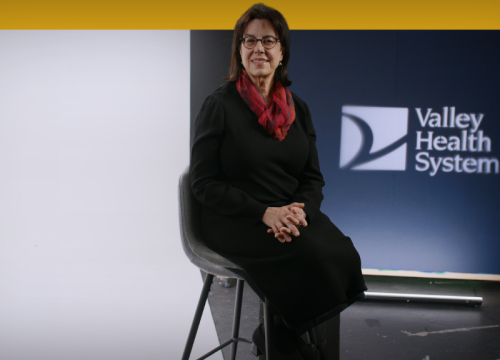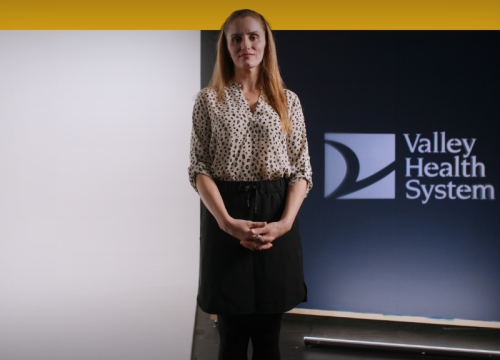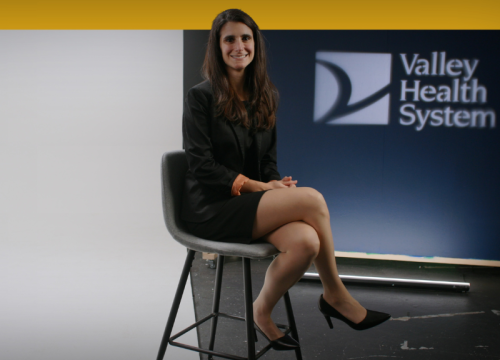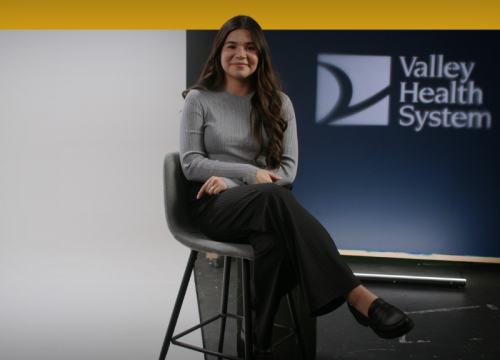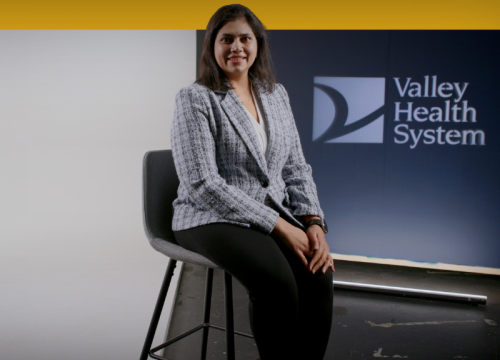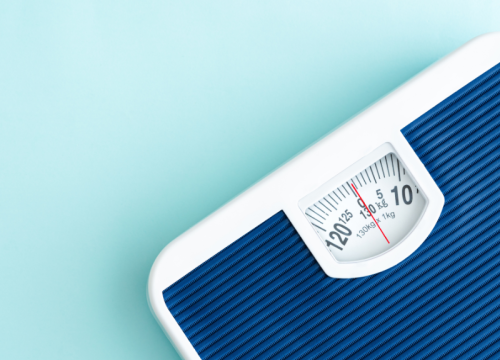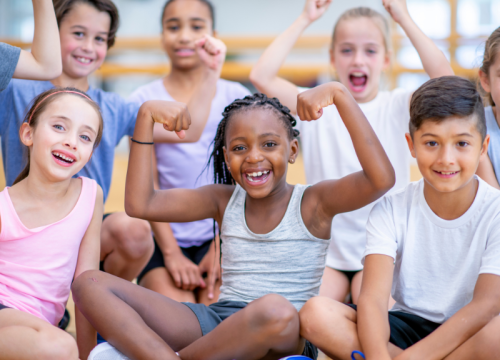A brain aneurysm is a bulging blood vessel in the brain. It occurs when a thin, weak spot forms along an artery wall. This weak spot may balloon outward and fill with blood. About one in 50 people will develop a brain aneurysm throughout their life time. Most aneurysms remain small and do not burst or cause any symptoms.
However, if an aneurysm ruptures, blood will flow out of that artery and into your brain. This is a life-threatening condition called a hemorrhagic stroke.
Fortunately, with prompt diagnosis and treatment, ruptured aneurysms are survivable for some people. Valley neurosurgeons specialize in innovative treatments, including minimally invasive surgery, that can often prevent aneurysms from rupturing. And this helps you avoid the need for life-saving emergency care.
Watch: Brain aneurysm patient Mariko Takagi and her daughters share how The Valley Hospital worked to quickly diagnose and treat her brain aneurysm.
Brain Aneurysm Symptoms
Many people with brain aneurysms don’t even realize it. Some people find out they have one by accident, during tests for other neurological conditions. Others are unaware until the moment their aneurysm ruptures, causing sudden symptoms.
Signs of an Unruptured Aneurysm
You may have early signs of an unruptured brain aneurysm if it’s large and presses against a nerve or brain tissue. These early signs include:
- Blurred or double vision
- Dilated pupil in one eye
- Numbness or weakness on one side of the face
- Pain around or behind one eye
Signs of a Ruptured Aneurysm
If you have an aneurysm that ruptures, you’ll probably develop a sudden, extremely painful headache. People who have experienced this often say it was “the worst headache of their life.” Other symptoms may include:
- Confusion
- Loss of consciousness
- Nausea and vomiting
- Seizure
A ruptured brain aneurysm requires immediate treatment to prevent disability or death. If you or a loved one develop any of the above symptoms, call 911 right away.
Minimally Invasive Brain Aneurysm Treatment
Valley neurosurgeons specialize in minimally invasive approaches to treat brain aneurysms.
In these cases, instead of opening your skull we can guide hollow, flexible tubes (catheters) through your blood vessels and into your brain. Once we reach the aneurysm, we can pass tiny tools or devices through the catheter.
These minimally invasive techniques are sometimes referred to as “endovascular” procedures. Valley’s endovascular neurosurgeons are highly experienced in these procedures.
Types of Minimally Invasive Procedures for Brain Aneurysm
Valley offers all of the latest minimally invasive procedures for brain aneurysms, including:
- Aneurysm coiling: During this procedure — also known as coil embolization or endovascular coiling — your surgeon places a tiny platinum coil inside the bulging portion of the blood vessel. This prevents any more blood from entering the aneurysm, which keeps it from rupturing.
- Flow diversion (flow diverter stent placement): Instead of placing a coil or other device directly inside the aneurysm, your surgeon inserts a tiny mesh tube (stent) in the main artery that feeds the aneurysm. The stent blocks the “neck” (opening) of the aneurysm, so blood can no longer flow inside.
- Woven EndoBridge (WEB) aneurysm treatment: During this treatment for wide-neck aneurysms, which have been hard to repair until now, your surgeon implants a flexible, expanding mesh ball. Not only does this device fill the aneurysm itself, but it also redirects blood flow away from it.
Watch: Director of Neurointerventional Neurosurgery Dororthea Altschul, MD, discusses how Valley uses minimally invasive techniques to repair unruptured brain aneurysms.
Recovering from Minimally Invasive Brain Surgery
With minimally invasive brain surgery, your recovery is typically faster and includes fewer side effects than open surgery. Here’s what you can expect after minimally invasive brain aneurysm treatment:
- After surgery, you’ll spend about one night in the hospital for monitoring
- For several days after surgery, you may have some bruising and you may experience mild headaches and fatigue.
- Most of our patients are able to go back to work within a week of surgery.
Two weeks after surgery, you’ll typically have a follow-up visit with your Valley neurosurgeon.
Brain Aneurysm Surgery
Minimally invasive surgery may not be right for some people. This is usually due to:
- Anatomy
- Size of the aneurysm
- Other medical conditions
In these cases, brain surgery is still the best option for treating brain aneurysms. Valley neurosurgeons have lots of experience performing “aneurysm clipping,” a procedure with a long track record of safety and success.
- During this procedure, your neurosurgeon temporarily removes a small piece of skull (craniotomy) near the aneurysm.
- Once your surgeon finds the aneurysm, they clamp its neck with a tiny metal clip. This blocks any more blood from entering the aneurysm.
Watchful Waiting
Sometimes, you may not need immediate surgery if you have a brain aneurysm. If you have an unruptured brain aneurysm, you and your Valley provider will discuss whether to treat it or keep an eye on it (known as “watchful waiting”). This decision is based on several factors:
- Size of your aneurysm
- Shape of your aneurysm
- Location of your aneurysm
Even though it can be scary to know there is a weak blood vessel inside your brain, watchful waiting is common. Not all brain aneurysms will rupture. And a brain aneurysm that is small and doesn’t cause any symptoms may pose fewer health risks than undergoing a procedure to treat it.
Why Choose Valley for Brain Aneurysm Care?
- Nationally recognized stroke care: If your brain aneurysm ruptures, causing a hemorrhagic stroke, you can count on us for expert emergency care. The Valley Hospital has been designated a Comprehensive Stroke Center — the highest honor a hospital can achieve — by The Joint Commission. This means patients brought to our emergency room have access to the most advanced stroke care available, improving your chances of survival and recovery.
- State-of-the-art operating suite: We’re home to a sophisticated “hybrid” operating room (OR) equipped for both traditional brain surgery and endovascular neurosurgery. This unique setup allows our providers to quickly transition from minimally invasive to open aneurysm repair should the need arise. And high-tech imaging equipment available in our hybrid OR lets us watch blood flow through the blood vessels in your brain. This means we can immediately confirm whether your treatment worked, without having to move you to a separate imaging suite.
- Neuroscience intensive care unit (ICU): Patients recovering from a brain aneurysm are cared for in our dedicated neuroscience ICU. In this unit, you’ll be cared for by our Brain Squad nurses. These nurses have advanced training and expertise in addressing the distinct needs of people who have had brain surgery.
- Robust rehabilitation care: In addition to offering the latest brain aneurysm treatments, we offer the rehabilitation services you may need to recover. This includes physical therapy to help you regain strength and movement, and occupational therapy to help you perform your normal daily activities. We also offer speech-language therapy for patients who have trouble speaking or swallowing after having a hemorrhagic stroke.




